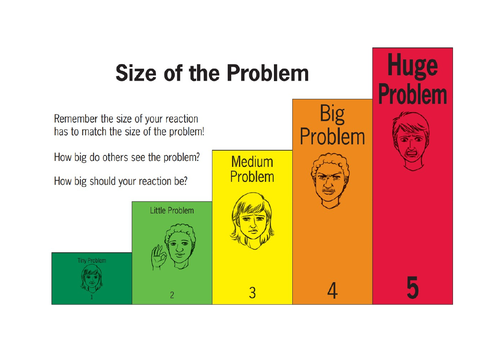Wellbeing
Zones of Regulation
The Blue Zone
Blue: The Blue Zone encompasses our lowest level of energy or alertness and can be helpful when we have goals such as falling asleep. It also includes when we have sad, bored, or lonely feelings. When we are in the Blue Zone and our goal or task requires more energy, such as focusing in class or at break times, it can be helpful to use a tool to provide us with more energy. Some examples of Blue Zone tools are drinking water, standing or stretching, talking with a friend, or even chewing something crunchy.
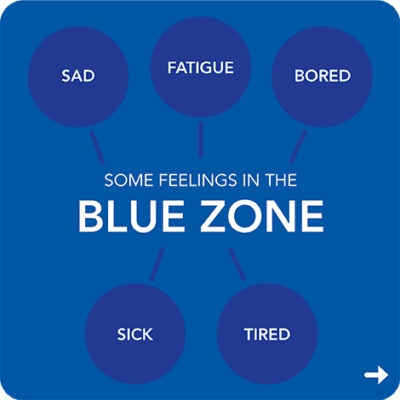
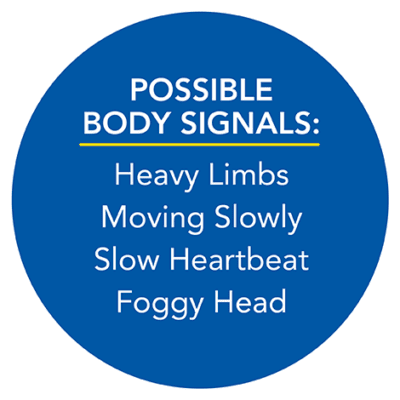
The Green Zone
In the Green Zone we have more neutral feelings, energy, and levels of alertness. This Zone works well when your goal is to learn, listen or process information. We may feel calm, content, happy, or focused in the Green Zone. It can be helpful to be in the Green Zone during classroom reading time, for example, but if you are trying to fall asleep, it can be more helpful to have a lower level of energy. And, of course, when playing a competitive sport, it’s helpful to have more energy. Some of tools to support being in the Green Zone include getting enough sleep and exercise, eating healthy foods, and connecting with loved ones.
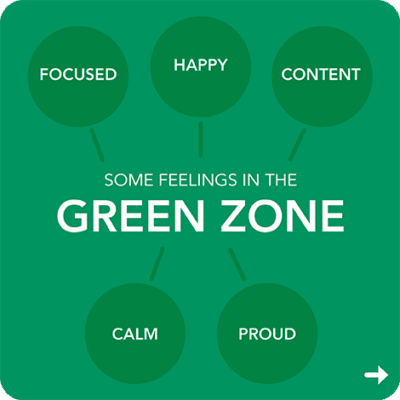
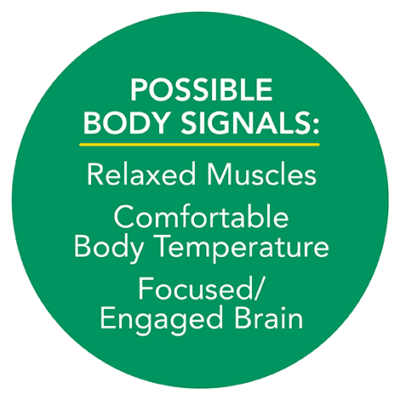
The Yellow Zone
When we are in the Yellow Zone, we have higher levels energy and stronger emotion, such as feeling excited, fidgety, anxious, or frustrated. Although our feelings are becoming more intense, we usually still have a sense of control when in the Yellow Zone. Being in this Zone can be helpful when competing in a game, doing a school performance, or playing with friends because higher energy or level of alertness helps us engage and perform in these activities. We might decide to regulate our Yellow Zone when our goal is to complete some work, try to get some rest/sleep, or study. Some Yellow Zone tools include taking deep breaths, using a fidget, positive self-talk, and connecting with someone for support.
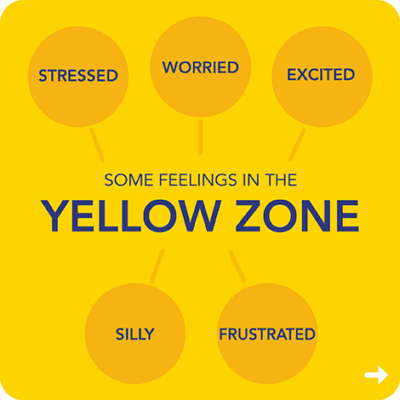
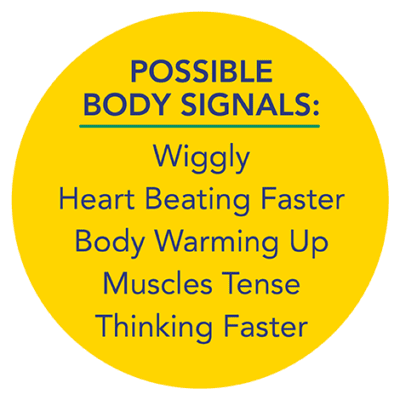
The Red Zone
The Red Zone is the highest and most intense Zone, ranging from elation to anger. It’s an important Zone because it helps us when we’re in a situation where we need to react quickly and keep ourselves safe, such as when we are in danger. Learning how to manage these big feelings is important. The Red Zone does not only encompass uncomfortable feelings, it also includes overwhelming positive feelings as well as such as overjoyed and elated. Tools for the Red Zone help us gain a sense of control or stay safe. They tend to be calming in nature and might include taking a break, breathing, mindfulness, and physical activity like running or yoga.
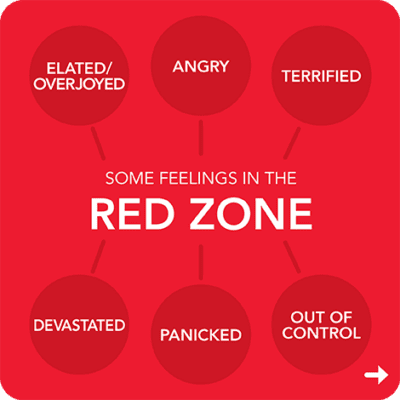
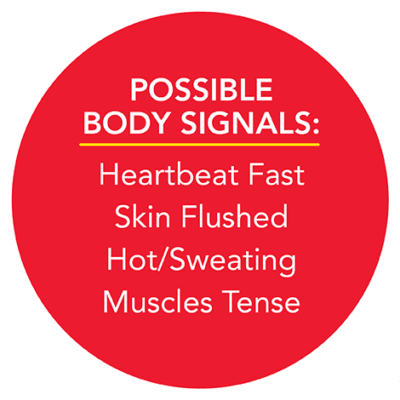
The Zones of Regulation is a common language based around the use of four colours to help children self-identify how they're feeling and categorise it based on colour. The curriculum also helps children better understand their emotions, sensory needs and thinking patterns.
Size of the Problem
Size of the Problem helps students identify the appropriate reaction to match the severity of a problem. When students have a common language to describe their problems and reactions, they can better identify solutions
Counselling and Mentoring Provision
At Brookland we work with a range of external qualified counsellors who provide 1-1 confidential sessions for children. We also provide in school mentoring for pupils with carefully identified pairing of staff and pupils.
We have specially allocated wellbeing spaces within the school. Our hubs provide a calm, private space for meetings. We also have a sensory space in our Little Den with a calming sensory environment.
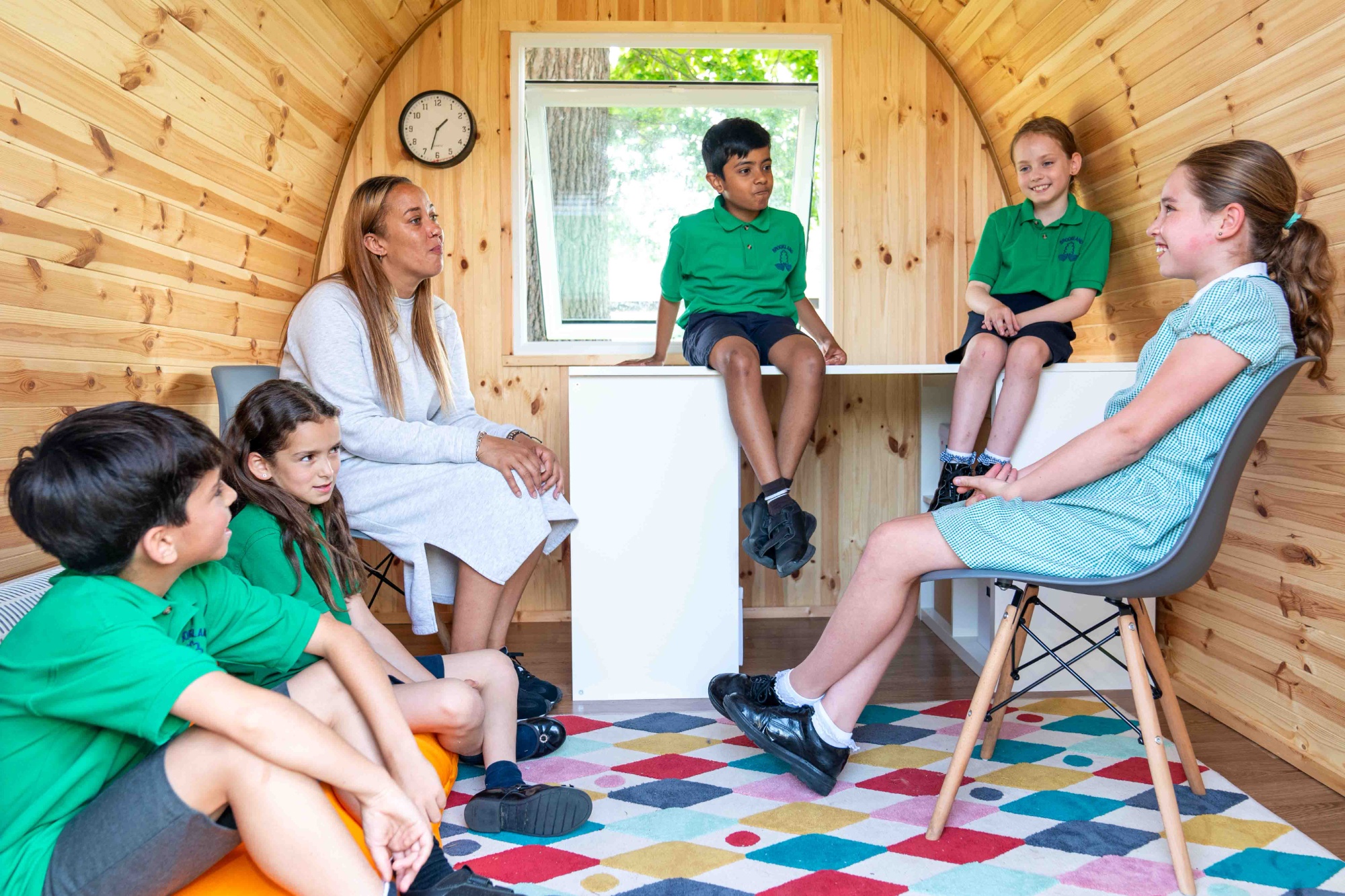
Provision is allocated on a case by case basis. Please contact our Wellbeing Lead, Mr. Greenhouse, for more information: simon@brooklandjnr.barnetmail.net
BASE
This year Brookland Junior is delighted to announce that we have acquired funding to work with BASE Street Aheadz, a registered charity committed to supporting young people and mental health. BASE, which stands for Body and Soul Education, is a school-based initiative that provides the entire school community with essential mental health and well-being education for navigating today’s complex society. Their overarching goal is to empower the community, ensuring that everyone becomes physically and mentally fit for life.
Parent Hub
Mr. Greenhouse's Parent Hub meets termly and provides parents with a space to share, listen and discuss particular topics and build a supportive community.
Books about Wellbeing
Wellbeing Books for Adults
Atlas of the Heart by Brene Brown
Permission to Feel by Professor Marc Brackett
Emotional Intelligence by David Goleman
Wellbeing Books for Children and Adults to Read Together
Emotional Literacy (Helping Children Successfully Identify and Express their Feelings) by Dr. Gabby
Happy Confident Me (Daily Journal) www.happyconfident.com
The Boy, the Mole and the Fox by Charles Mackesy
Wellbeing Books for Children
Magic Mistakes by Belinda Blecher
Freya's Funny Feelings by Samia Quddus
Kindness Grows by Britta Teckentrup
The invisible Boy by Patrice Barton
Sophie Says It's Ok Not to be Ok by Esther Marshall
How are you Feeling Today? by Mollie Potter
Empathy is Your Superpower by Cori Bussolari
You are Stronger than Anger by Elisabeth Cole
Signposting and Links
https://www.youngminds.org.uk/
https://www.barnet.gov.uk/children-and-families/early-help-children-young-people-and-families
Parent Wellbeing Guides from the National College

